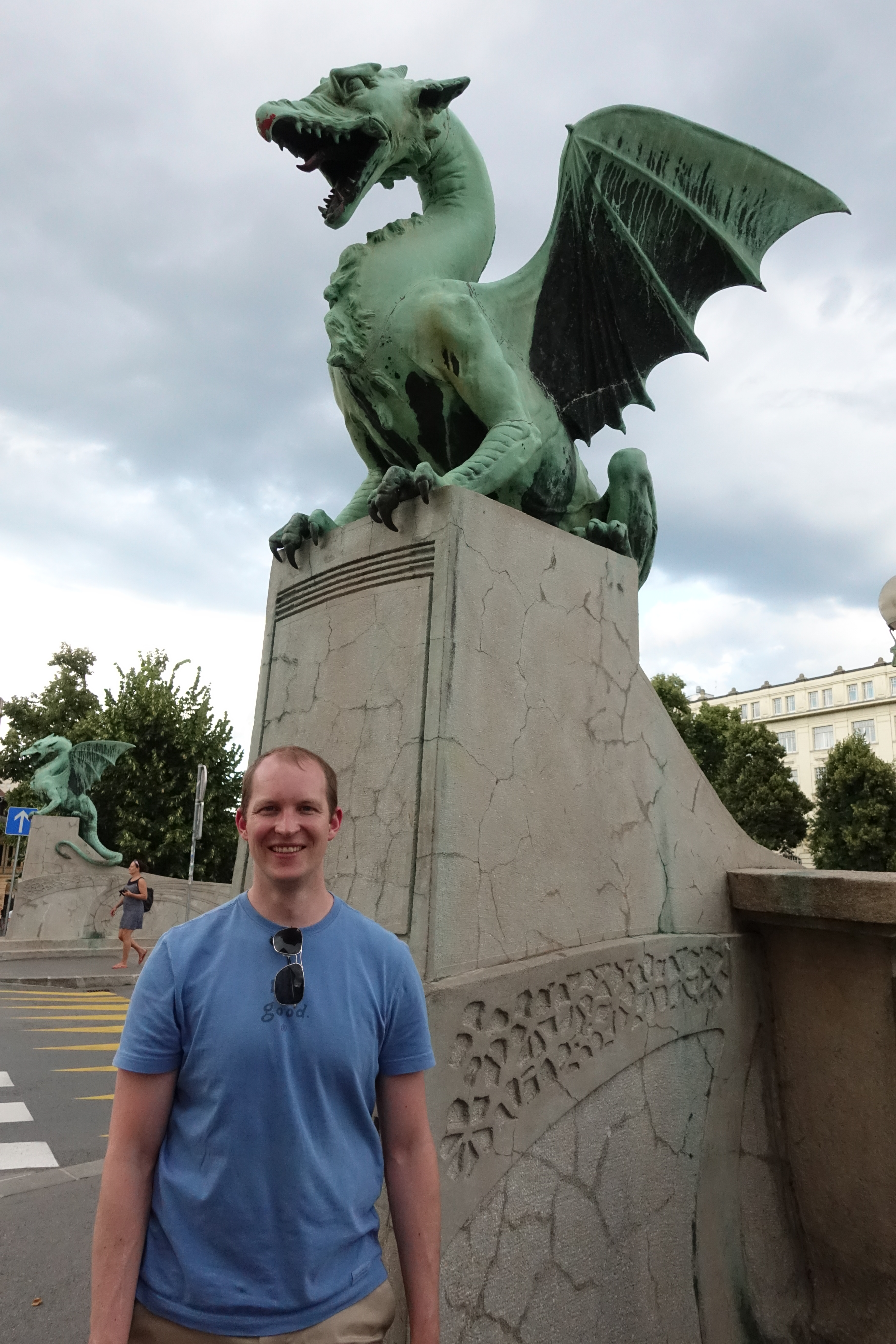Our fifth day began with some more pastries at the little café near the resort and then our guide for the next several days, Domen, picked us up at around 8:45 am. For the next three days Domen will be our guide, driver and trip-organizer! Our first scheduled stop was a tour of the Škocjanske Caves – they aren’t the biggest caves in Slovenia but there are way less tourists there. One fun fact about Slovenia, there are a lot of caves in Slovenia. Like more than a thousand caves. And the more touristy one (with an electric train) is also the largest cave in Europe, but it’s smaller than Mammoth Cave so score one for USA. Anyway, this was our first “scheduled” stop but Domen took us on a detour to see some Lipzizaner horses. It was pretty cool, but they weren’t actually doing anything fancy other than eating some grass. Which I guess not a lot of people have seen them do now that I think about it.

Anyway, we made it to the caves around 10/10:30 and then began our tour of the largest underground gorge in Europe. It was the first time in my memory I’ve done such a small tour – just me, pops, mom, Domen and our guide. Our guide asked me a lot of questions about Mammoth cave after she learned that I had been there and I felt woefully inadequate in answering them because I went to the part where we mined bat guano for saltpeter to make gunpowder to fight the British… Which wasn’t nearly as gorgeous as this cave. We entered from an area that was excavated in the 30’s and then passed through some pretty spectacular chambers with stalagmites/stalactites/columns/curtains. Like all touristed caves they make special mention to not touch anything and that things in the cave grow at a rate of about 1 cm every 250 years.

After this awesome portion we passed into a part of a cave I’ve never been in before – one with a river in it! So this region of Slovenia is known as the Karst region and it’s pretty much just solid limestone. The Reka river (which just means river River) has slowly carved this cave through the rock and formed the cave. It’s somewhat prone to flooding, and when it does it can flood up to 160+m from the cave floor because the water has nowhere to go! The early explorers had made an original cave trail, but it looked scary as all get out so I was glad that they made a much less scary trail with a handrail and stuff. The river enters the cave in what I believe is called a dolmina – an area of the limestone that has collapsed because of the river eroding it away. We then hiked our way out instead of taking the lift and started on the road to our next stop – a winery!


The winery was a small family owned establishment in a small village. I’m pretty sure that about 60% of the people in the village were the immediate family of the winemaker. Another cool/interesting feature of this valley is the Bora Wind. During winter there is an exceptionally strong wind that can develop that blows from the northeast instead of the west/southwest. It can reach up to 240km/h in strength. This means sometimes the rest of Slovenia is covered in snow and this valley is nice and sunny and green. Or your roof blows off. We then tried some wine and ate some delicious meats/cheeses. Mom was getting sick of cured meats and cheese somehow, but we still managed to eat the entire plate. After the tasting we ate some traditional jota – fermented cabbage soup with sausage and some vegetables. It was absolutely fantastic. Dessert was peach cobbler and peach wine!





Luckily Domen was driving because it felt like nap time (at least for my traveling companions). On the drive to Ljubljana I asked Domen all the too-typical questions I ask people from other countries to get a gauge of how different their every day life is to mine. He lives in a village of about 250 people that is about a 40-50 minute commute to Ljubljana and grew up in a house with cows, pigs and a big garden. But overall a lot of things are fairly similar, like “speeding” on the highway. Along the way he asked if we wanted to take a detour to see a castle so I said yes. It is called Predjamski Grad – and it’s a castle that is built in front of a cave. Apparently it was once sieged for a year before the owner of the castle was shot with an arrow while using the privy.



We then drove on to Ljubljana – the capital of Slovenia and its largest city (about 300k people). Domen took us to our hotel which was a gorgeous boutique hotel located right in the heart of Ljubljana. We then met another guide for a walking tour, I’m pretty sure her name was some variation of Tasha but I don’t actually know what it was. She gave a pretty good tour, although I could tell she had almost too much knowledge she wanted to share with us because she’d occasionally go off on almost a tangent to tell us about something different. We also learned that a lot of the architecture was made by one architect. And that pickpockets look like tourists! There is like an association of guides who take pictures of the pickpockets and send them to the police and stuff. Dinner was a traditional meal from Eastern Slovenia at a restaurant named Gujzina. It was really tasty!







